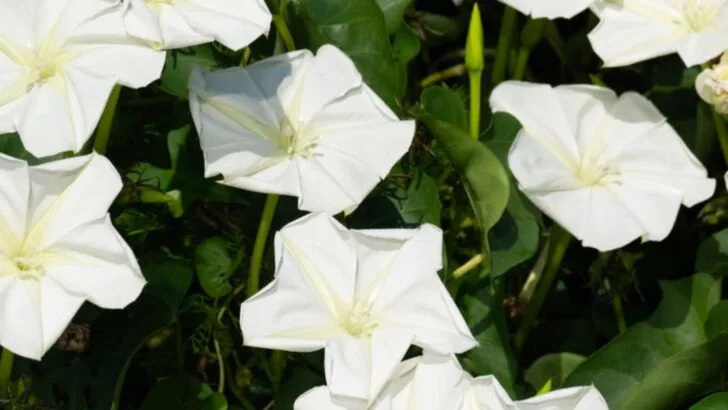Scent is one of the most powerful elements in any garden—but not all fragrant flowers are created equal. Some release a heavenly perfume for just a fleeting moment, while others wait until the sun dips low to truly show off. If you’ve ever planted something with high hopes for fragrance and found it underwhelming, the timing of its bloom might be the secret you missed.
In this list, we break down 9 beautifully scented blooms that smell amazing—but only for a short time. These are the delicate charmers that require perfect timing to enjoy at their peak. Then, we reveal 8 powerful dusk-scented flowers that wait for evening to unleash their magic—just when the air cools and your garden feels calmest. These are the plants that shine during twilight dinners, moonlit walks, and summer nights on the patio.
Whether you’re planning an evening garden, hoping to catch scent as you pass by, or simply want to know which flowers deliver the most fragrance, this guide will help you choose wisely. With the right mix of fast-fading beauties and night-perfuming stars, you’ll create a space that smells as magical as it looks—at just the right time of day.
Gardenia
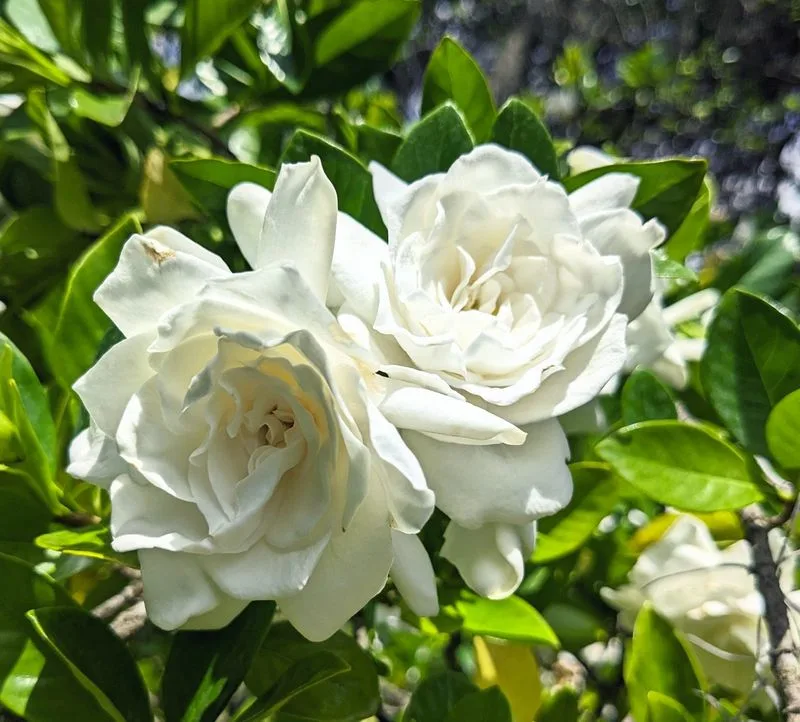
Gardenias charm with their creamy-white petals and intoxicating scent. Yet, their fragrance doesn’t linger long, offering merely a fleeting moment of olfactory delight. These blossoms, often associated with romance and elegance, bloom in the warm embrace of summer, filling the air with a sweet, heady aroma. The beautiful gardenia is a popular choice for corsages, symbolizing purity and secret love. Although their scent fades quickly, the memory of their fragrance lingers in the heart. Perfect for brief, memorable moments, gardenias invite you to savor their scent while it lasts.
Lilac
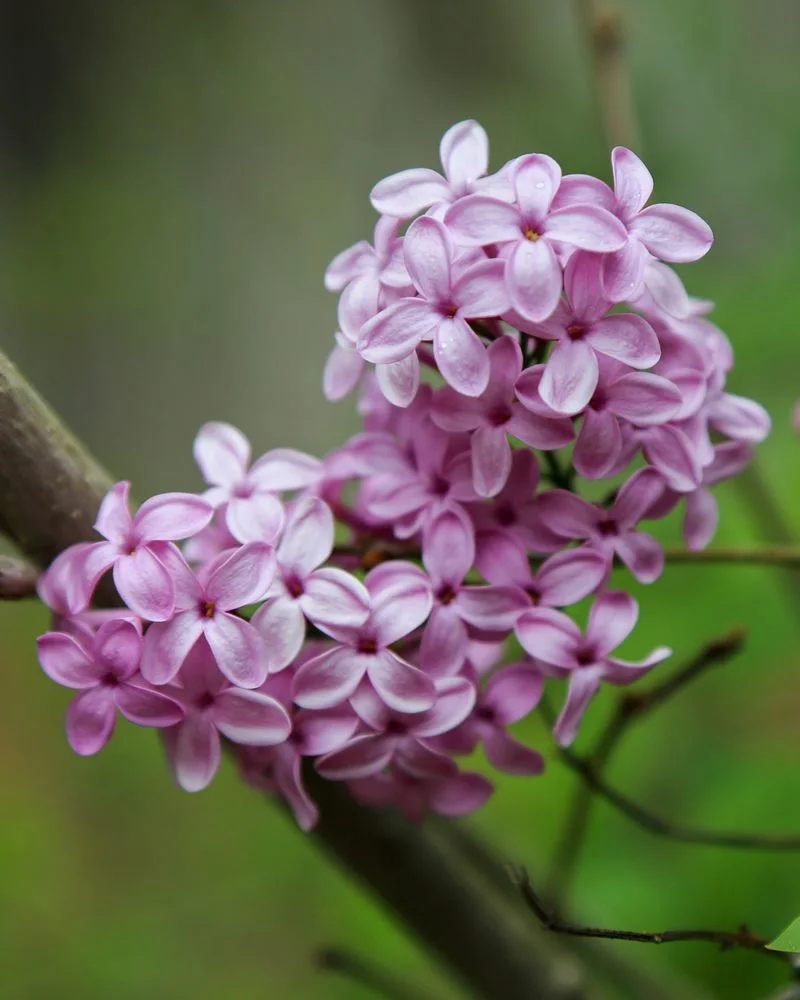
Lilacs are synonymous with spring, their clusters of small, tubular flowers heralding the season’s arrival with a burst of color and a gentle fragrance. Though their scent is short-lived, lilacs are beloved for their nostalgic allure, often invoking memories of childhood gardens. Known for their varying shades of purple and pink, these flowers symbolize renewal and confidence. Whether planted along garden paths or arranged in a vase, lilacs offer a brief but sweet reminder of nature’s fleeting beauty and the ephemeral nature of springtime joy.
Magnolia
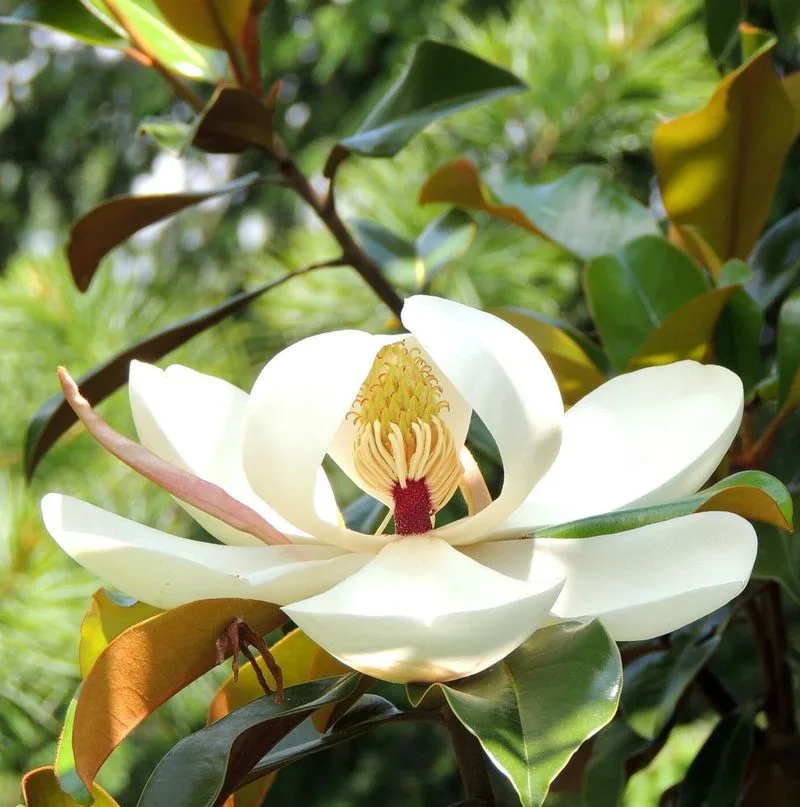
Magnolias, with their grandiose flowers and rich fragrance, captivate the senses and evoke a sense of timeless beauty. These elegant blossoms unfurl in spring, offering a short-lived yet unforgettable olfactory experience. With creamy petals and a citrus-like aroma, magnolias are often associated with southern charm and hospitality. The trees themselves are magnificent, adorned with glossy green leaves that contrast beautifully with their flowers. Magnolias serve as a reminder of nature’s ability to create moments of breathtaking beauty, if only for a fleeting period.
Cherry Blossom
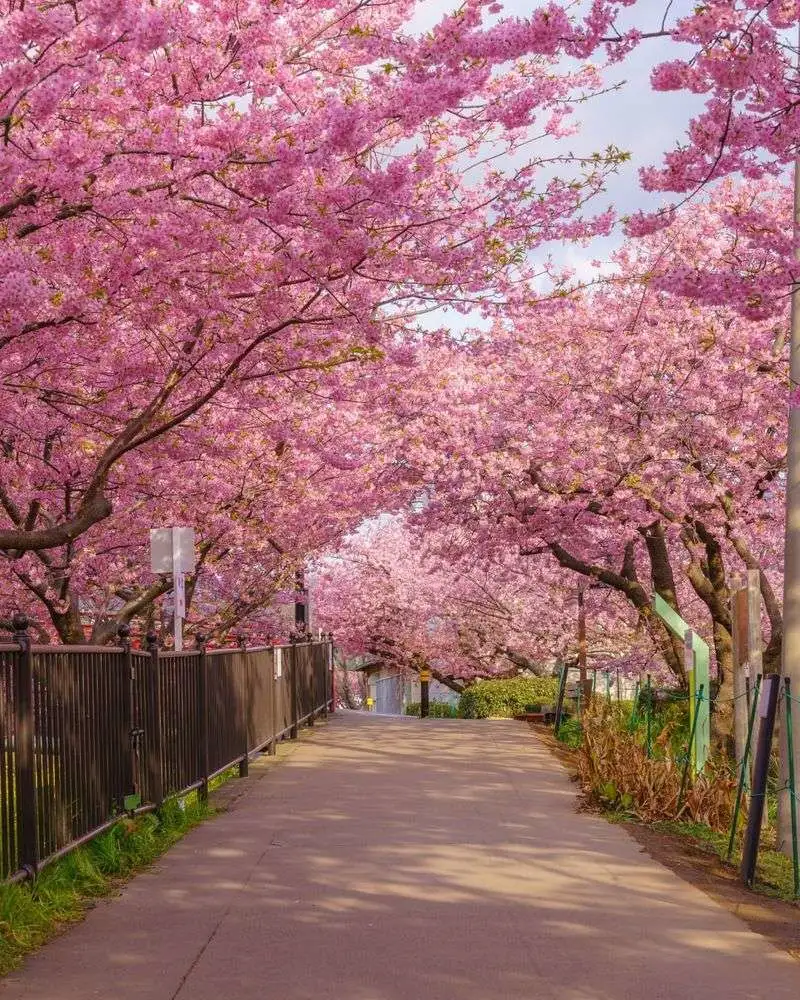
As a symbol of renewal and the transience of life, cherry blossoms offer a brief but spectacular display each spring. Their delicate pink and white petals release a subtle fragrance that’s best enjoyed up close. In Japan, cherry blossoms, or sakura, are celebrated with festivals, where people gather to appreciate their beauty. The fragrance of these blossoms is as fleeting as their bloom, creating a sense of urgency to enjoy them before they disappear. Cherry blossoms teach us to live in the moment, embracing beauty even as it fades.
Jasmine
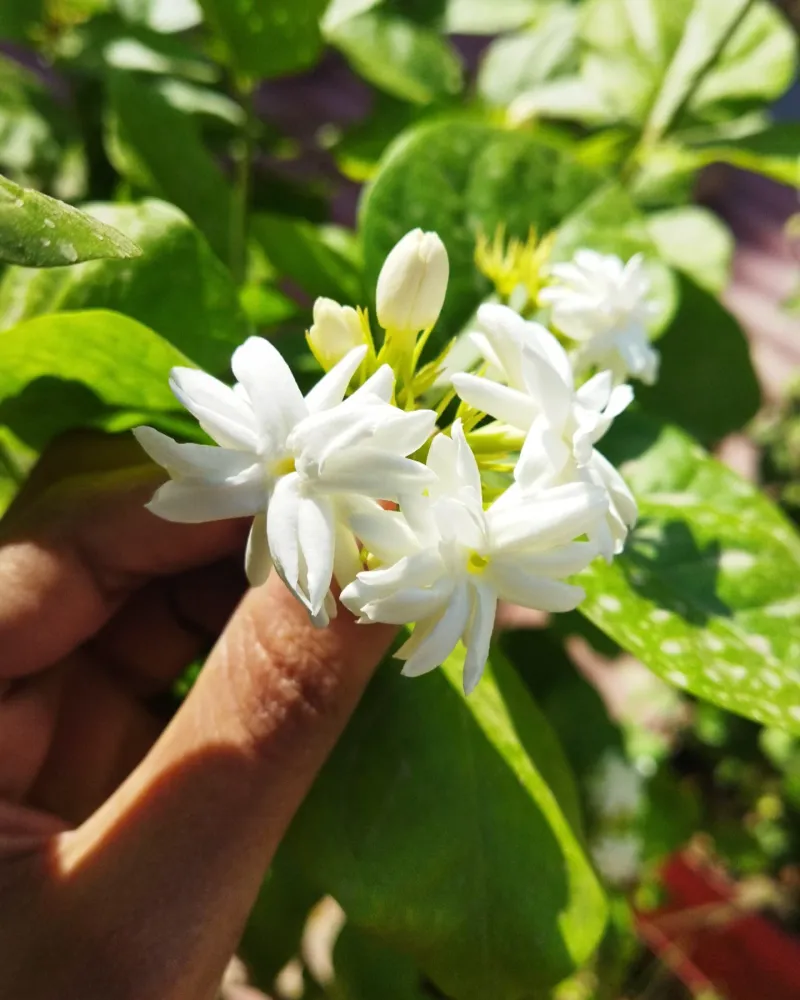
Jasmine is renowned for its exotic and intoxicating fragrance, often described as sweet and floral. However, its scent is most potent during the evening and fades quickly by morning. This climbing plant, adorned with star-shaped white flowers, is a favorite in perfumery, symbolizing love and sensuality. In many cultures, jasmine is used in ceremonies and celebrations, signifying beauty and purity. Its ephemeral scent invites you to savor the night’s mysteries, offering a moment of tranquility and allure before the dawn’s light.
Honeysuckle

Honeysuckle’s sweet, nectar-like fragrance is a familiar scent of summer evenings. These climbing vines, with their tubular flowers, attract hummingbirds and bees, playing a vital role in the garden ecosystem. While their scent is heavenly, it fades as the day progresses, often strongest at dusk. Honeysuckle symbolizes devoted affection and bonds of love, making it a cherished addition to any garden. Its fragrance provides a brief escape into nature’s wonders, urging you to pause and breathe deeply.
Freesia
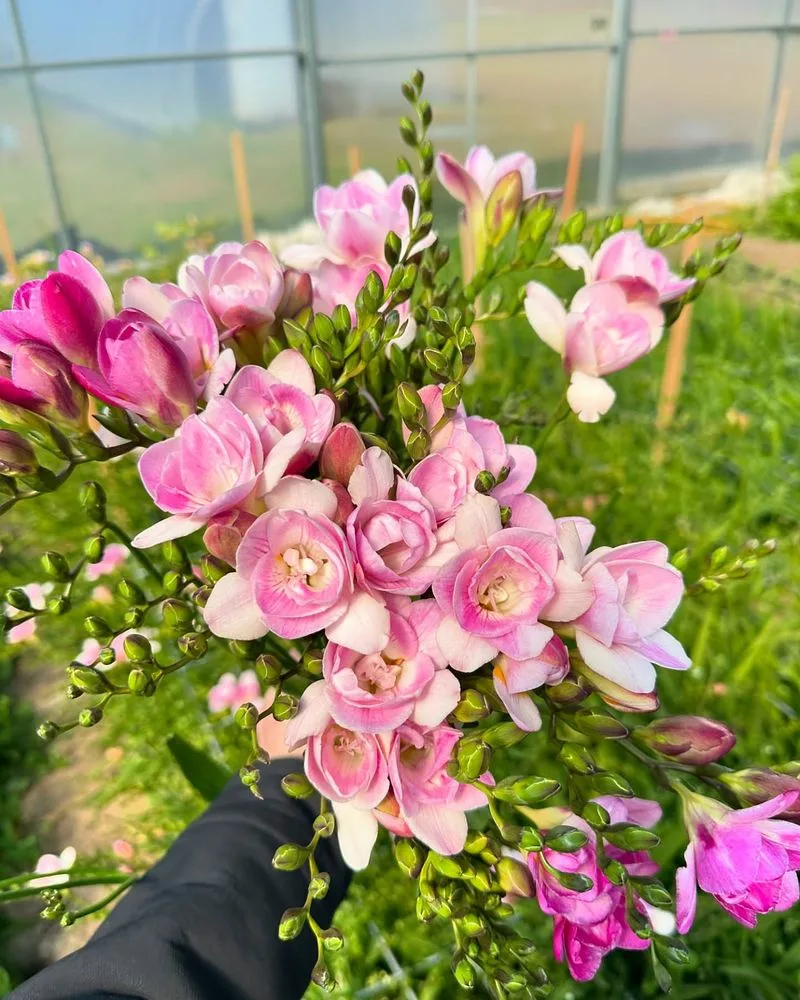
Freesias are a burst of color and fragrance, their trumpet-shaped flowers heralding the arrival of spring. With a scent reminiscent of strawberries and citrus, freesias are both uplifting and refreshing, though their fragrance doesn’t last long. These flowers are often used in bouquets and arrangements, adding a touch of elegance and charm. Freesias symbolize friendship and innocence, making them a thoughtful gift. Their brief yet potent aroma lingers in the air like a cherished memory, leaving a lasting impression.
Wisteria
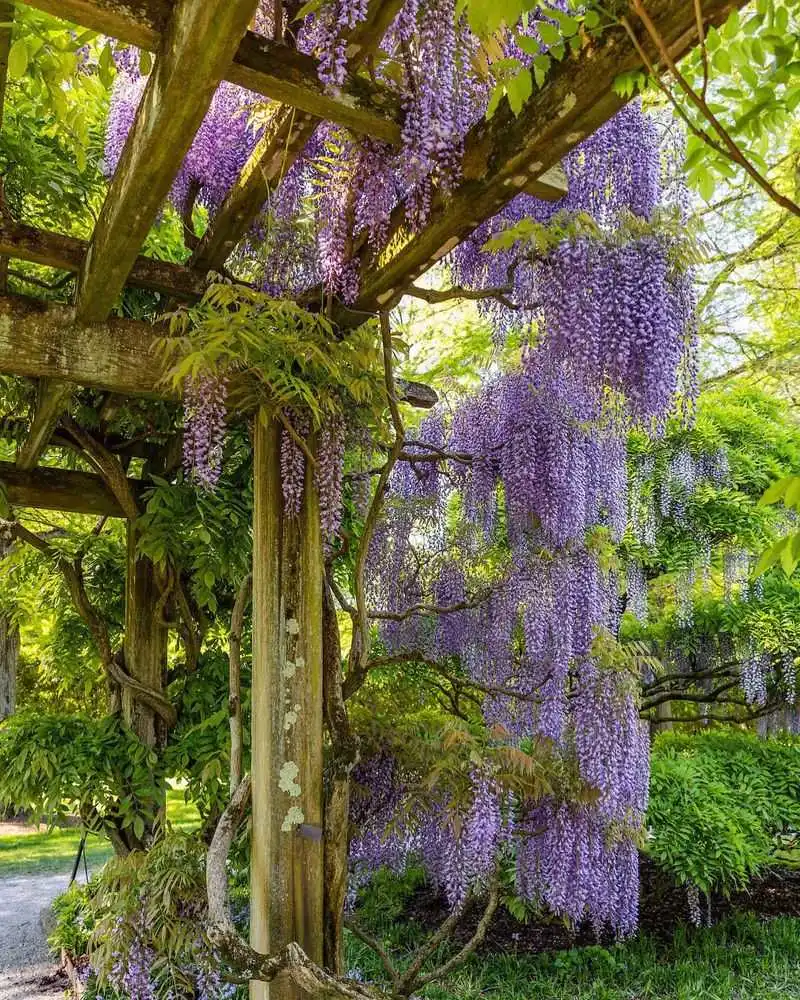
Wisteria captivates with its cascading clusters of lilac-hued flowers and a fragrance that’s as enticing as it is fleeting. These vigorous climbers transform gardens into enchanting spaces, their blooms hanging like elegant chandeliers. Known for their resilience and beauty, wisterias symbolize long life and immortality. Although the scent is short-lived, it leaves a lasting impression, inviting you to pause and appreciate its beauty. A garden adorned with wisteria promises a touch of old-world charm, even as its fragrance fades into memory.
Tuberose
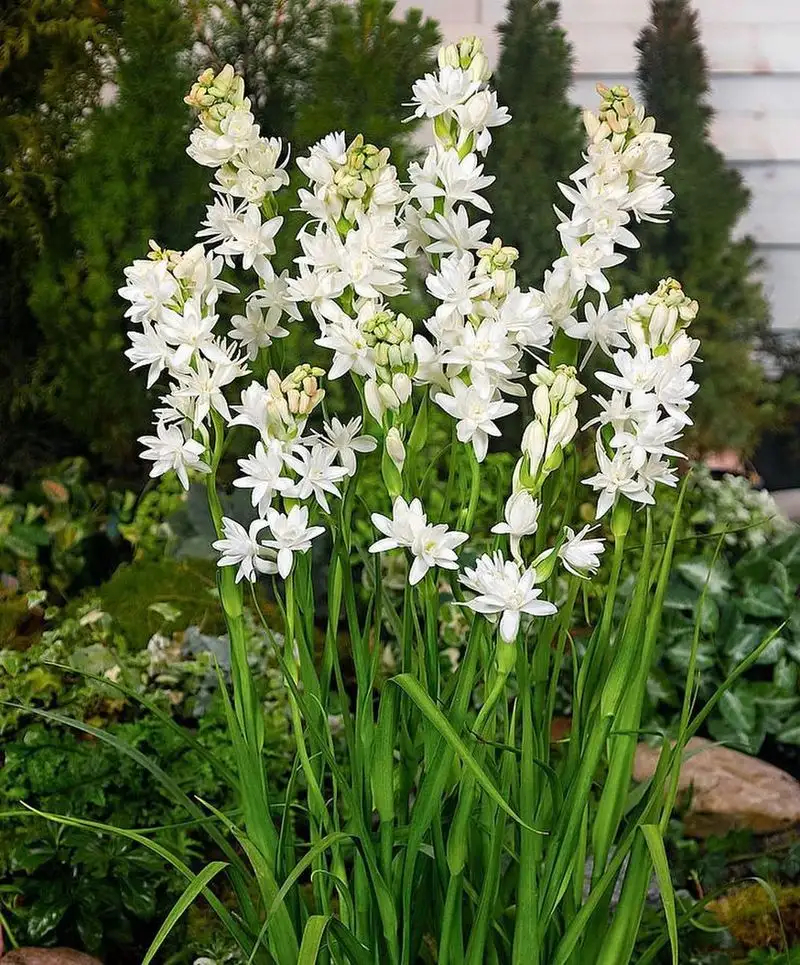
Tuberose is celebrated for its rich, heady fragrance, often described as a blend of jasmine and gardenia. These night-blooming flowers emit a scent that’s strongest at dusk, enveloping the surroundings in a floral embrace. Tuberose is a staple in the world of perfumery, symbolizing dangerous pleasure and forbidden love. Despite its intoxicating aroma, the fragrance fades by morning, leaving a lingering sense of mystery. Perfect for moonlit gardens, tuberose invites you to indulge in the night’s allure before it vanishes.
Night-blooming Cereus
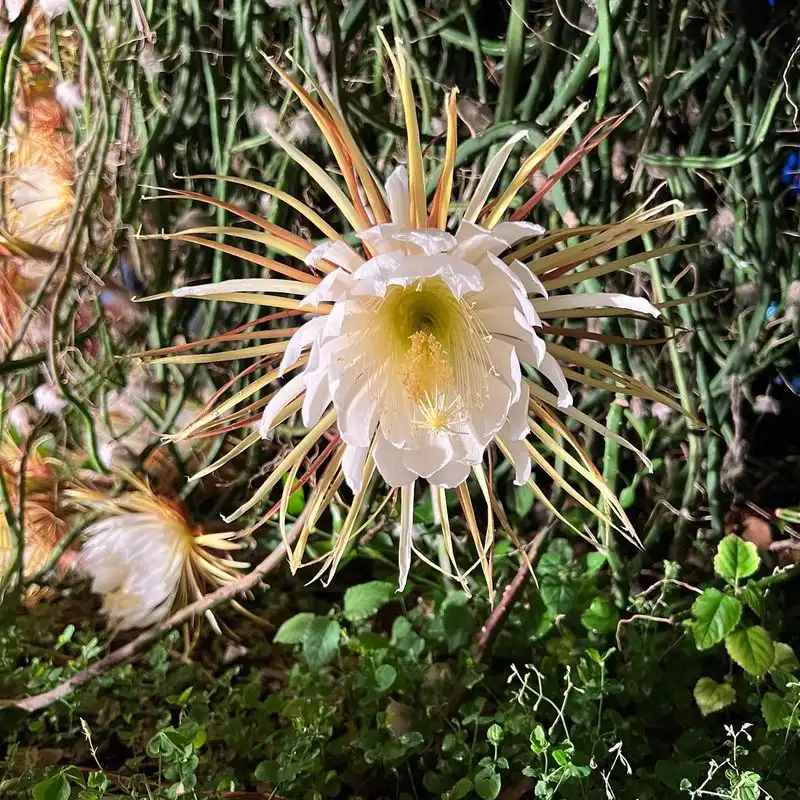
Known as the “Queen of the Night,” the night-blooming cereus captivates with its rare display. This cactus produces large, fragrant flowers that open only at night, releasing a scent reminiscent of vanilla and spice. The beauty of this bloom is ephemeral, lasting just a single evening before wilting by dawn. In many cultures, it symbolizes fleeting beauty and the transient nature of life. Its appearance is a rare spectacle, a moment of wonder that reminds us of the hidden marvels of the natural world.
Angel’s Trumpet
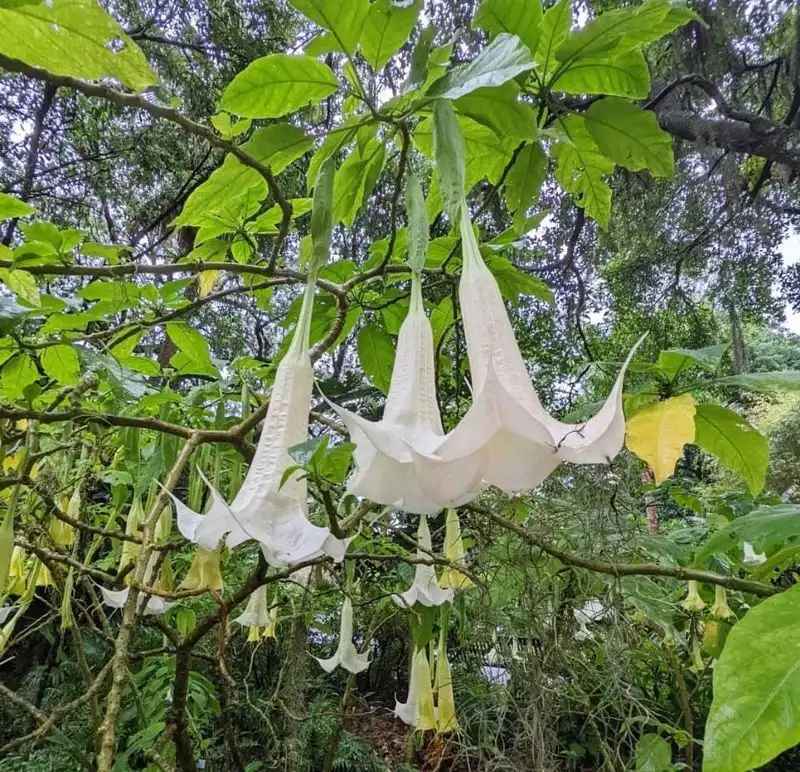
Angel’s trumpets, with their large, bell-shaped flowers, enchant with a fragrance that’s most potent at night. These tropical plants, native to South America, are known for their intoxicating scent and striking appearance. The flowers hang like delicate trumpets, emitting a sweet perfume that attracts night-flying pollinators. Despite their beauty, all parts of the plant are toxic, symbolizing the duality of nature. Their scent invites you to explore the garden’s mysteries under the moonlight, while exercising caution and respect.
Moonflower
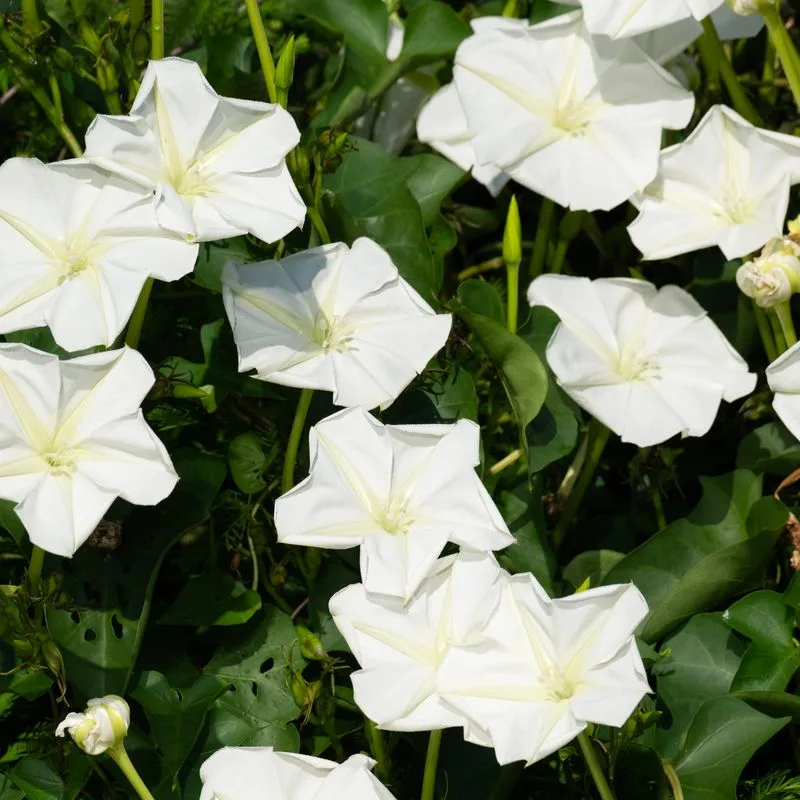
Moonflowers captivate with their large, white blooms that unfurl at twilight, releasing a sweet, alluring fragrance. These night-bloomers are perfect for evening gardens, reflecting the moonlight with their luminous petals. The scent, reminiscent of lilies and roses, invites you to linger in the garden’s embrace. Symbolizing dreams and enchantment, moonflowers remind us of the beauty and magic that can be found in the night. Though their blooms are short-lived, they offer a moment of tranquility and reflection.
Evening Primrose
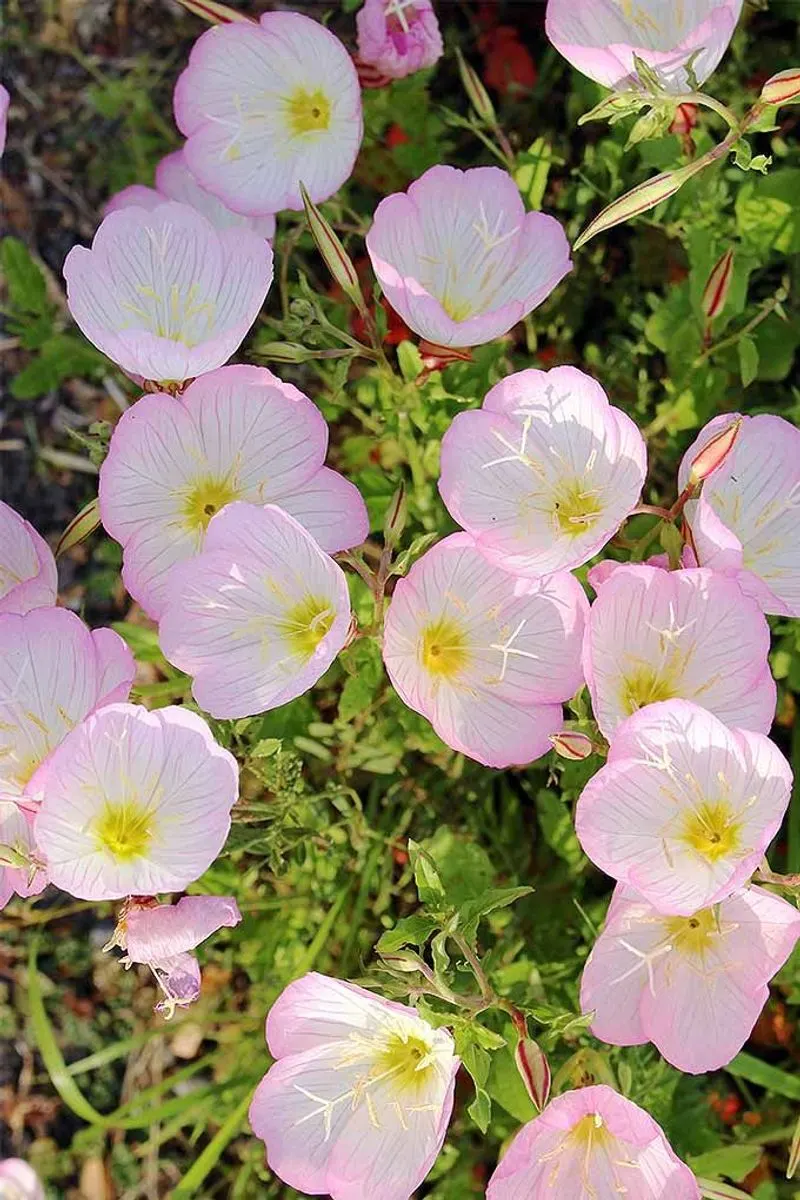
Evening primrose flowers open at dusk, lighting up the garden with their cheerful yellow blooms. Known for their subtle, sweet fragrance, these flowers attract moths and other nighttime pollinators. Beyond their beauty, evening primroses are valued for their oil, which has medicinal properties. Symbolizing healing and resilience, they add a touch of brightness to the garden as the sun sets. Their presence encourages us to explore the garden’s hidden wonders after dark, offering a glimpse into the vibrant life that thrives at night.
Four O’Clock Flower
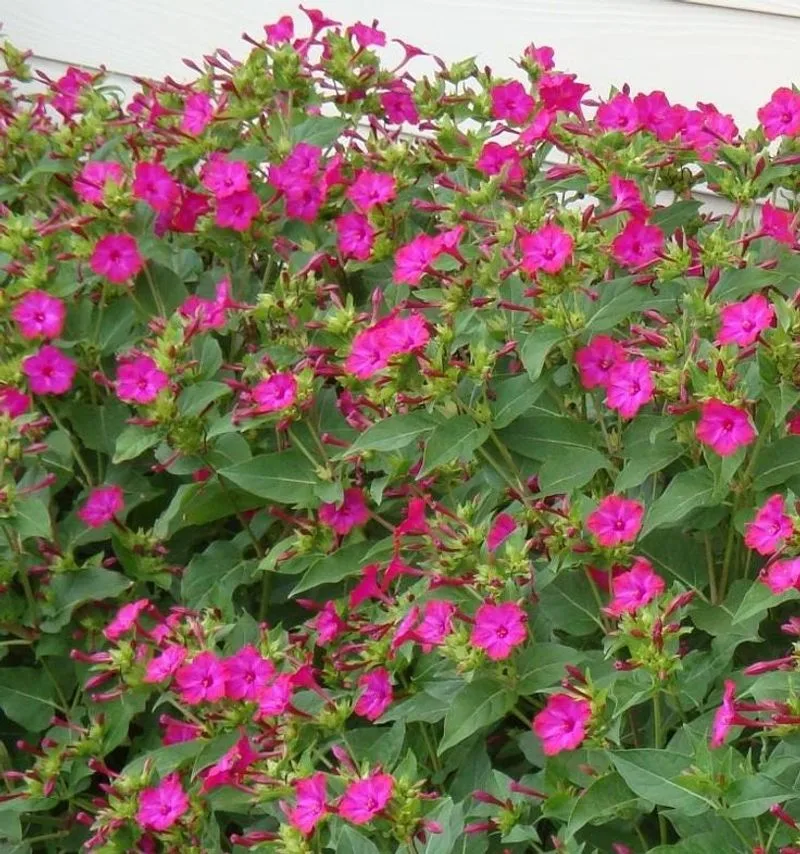
Four o’clock flowers surprise with their vibrant colors and delightful fragrance, opening in the late afternoon to greet the evening. These flowers, also known as mirabilis, are unique for their ability to produce flowers of different colors on the same plant. The scent is sweet and inviting, drawing in pollinators as the day turns to night. Four o’clocks symbolize time’s passage and the joy of unexpected beauty. Their blooms remind us that nature’s wonders often appear when least expected, adding a touch of whimsy to the garden.
Night Phlox
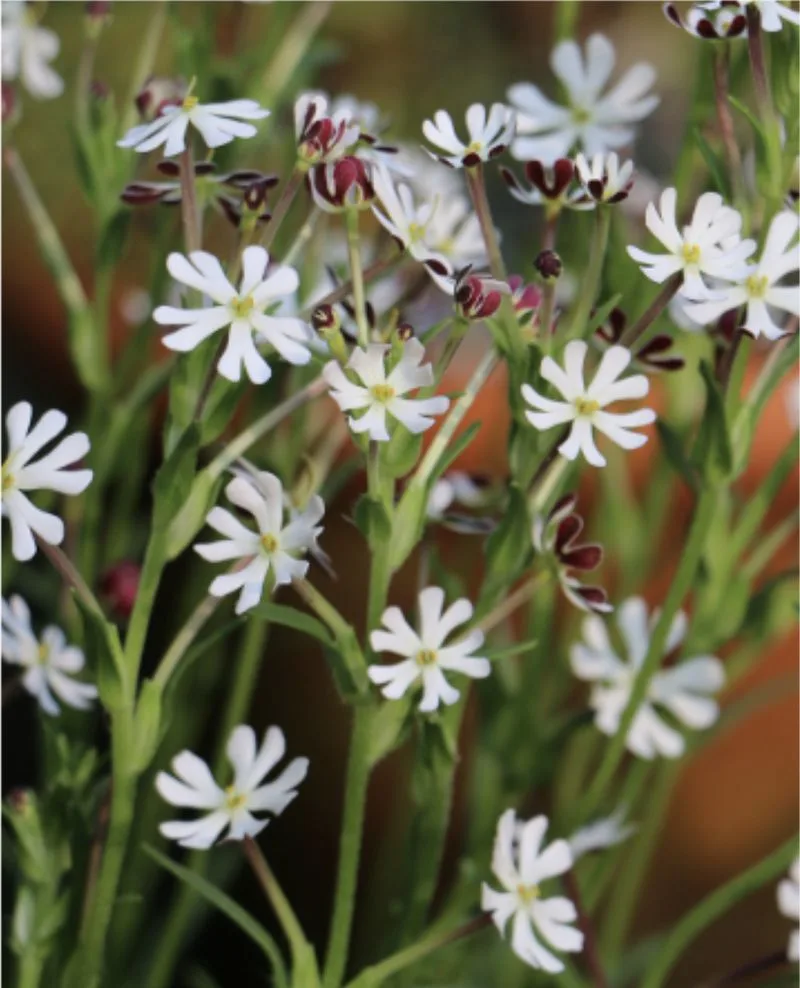
Night phlox, also known as “midnight candy,” emits a delightful fragrance reminiscent of honey and vanilla. These small, star-shaped flowers open in the evening, filling the air with their sweet scent. Perfect for moonlit gardens, night phlox attracts nighttime pollinators and adds a touch of enchantment to the garden. This flower symbolizes the joy and discovery found in the quiet moments of night. Its fragrance is a gentle reminder to pause and appreciate the simple pleasures of life, even as the world sleeps.
Tuberose
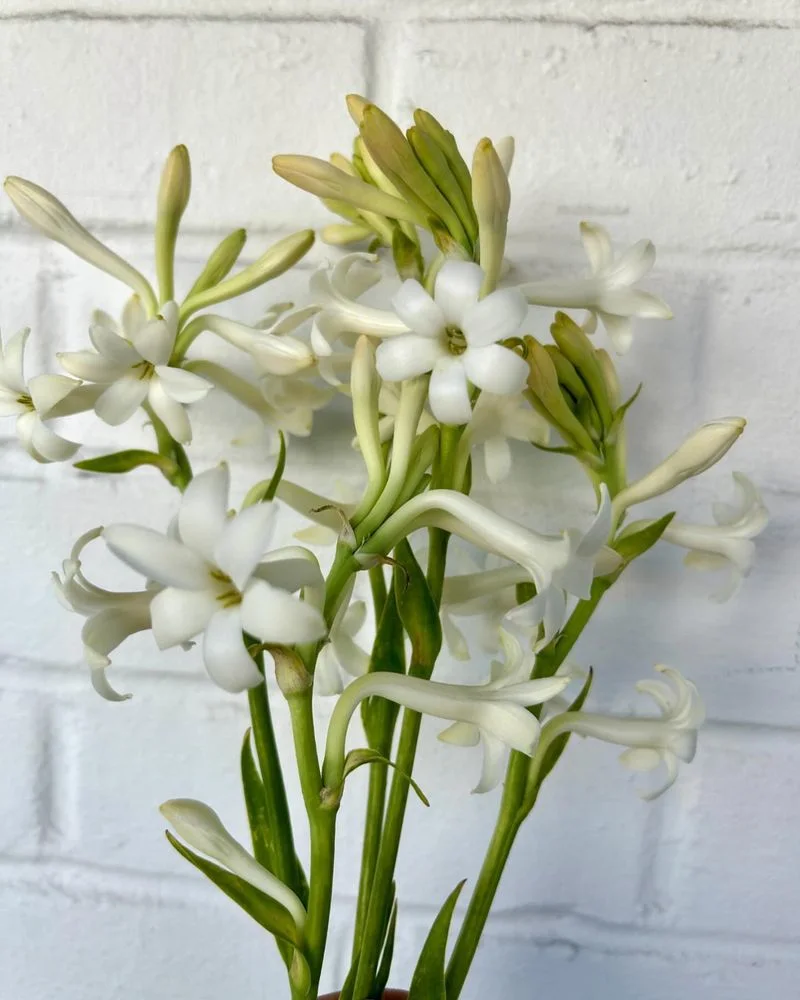
Tuberose is celebrated for its rich, heady fragrance, often described as a blend of jasmine and gardenia. These night-blooming flowers emit a scent that’s strongest at dusk, enveloping the surroundings in a floral embrace. Tuberose is a staple in the world of perfumery, symbolizing dangerous pleasure and forbidden love. Despite its intoxicating aroma, the fragrance fades by morning, leaving a lingering sense of mystery. Perfect for moonlit gardens, tuberose invites you to indulge in the night’s allure before it vanishes.
Nicotiana
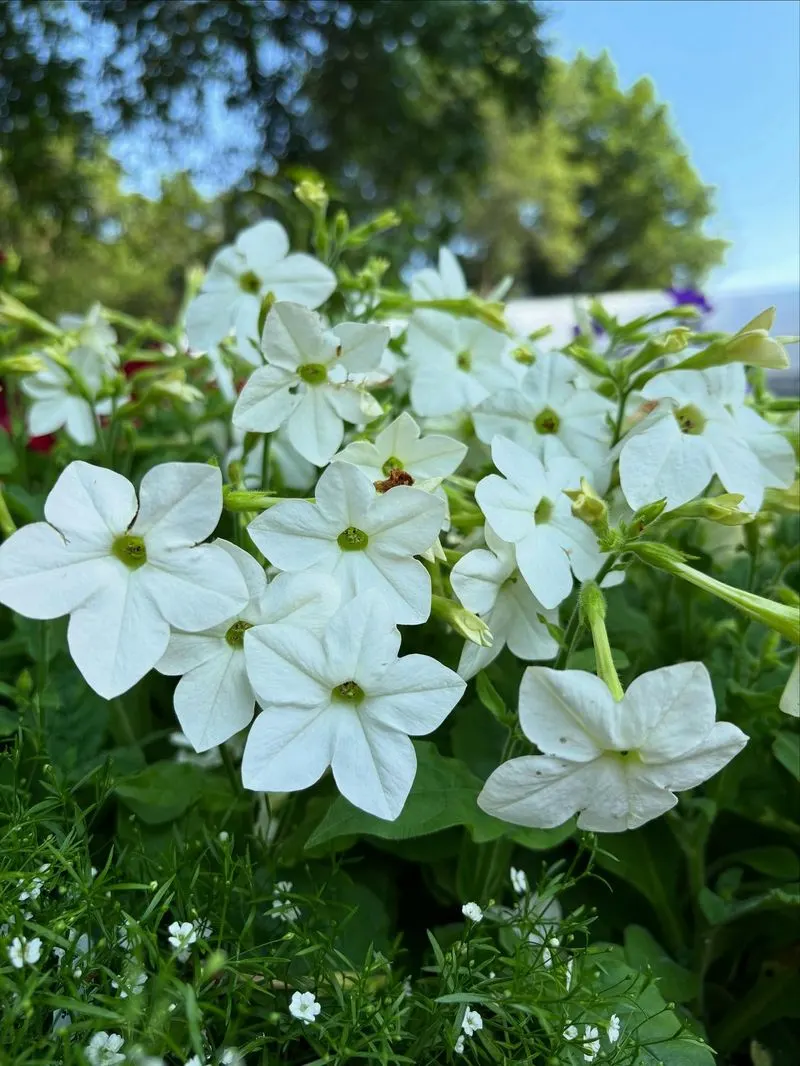
Nicotiana, or flowering tobacco, surprises with its evening fragrance, a sweet and spicy aroma that intensifies after sunset. These trumpet-shaped flowers, available in a range of colors, are perfect for adding fragrance to patios and walkways. Nicotiana symbolizes both danger and beauty, as its leaves are toxic but its flowers are entrancing. The scent of nicotiana invites you to savor the garden’s nocturnal beauty, a reminder that some of nature’s most delightful moments occur under the cover of darkness.

